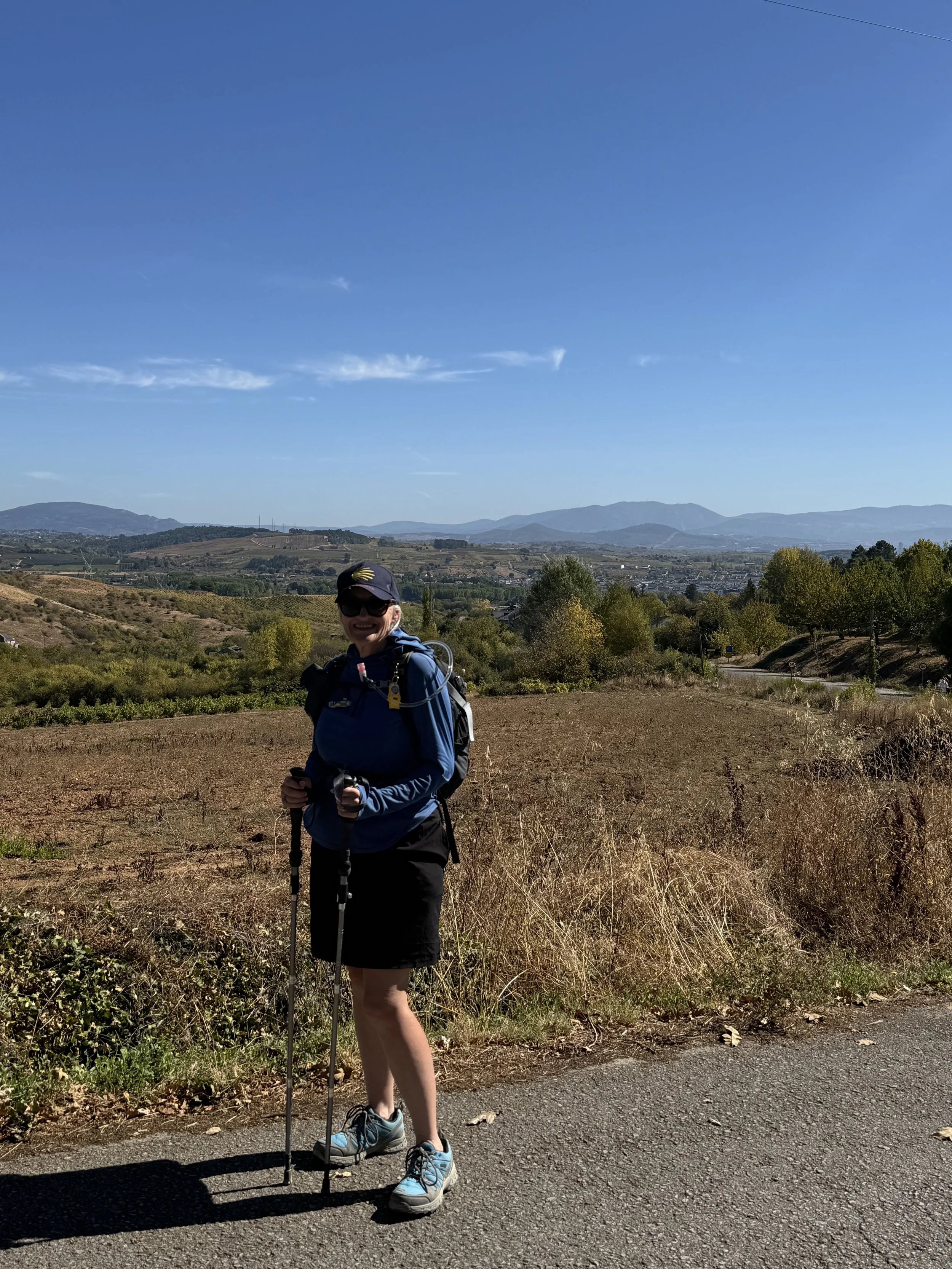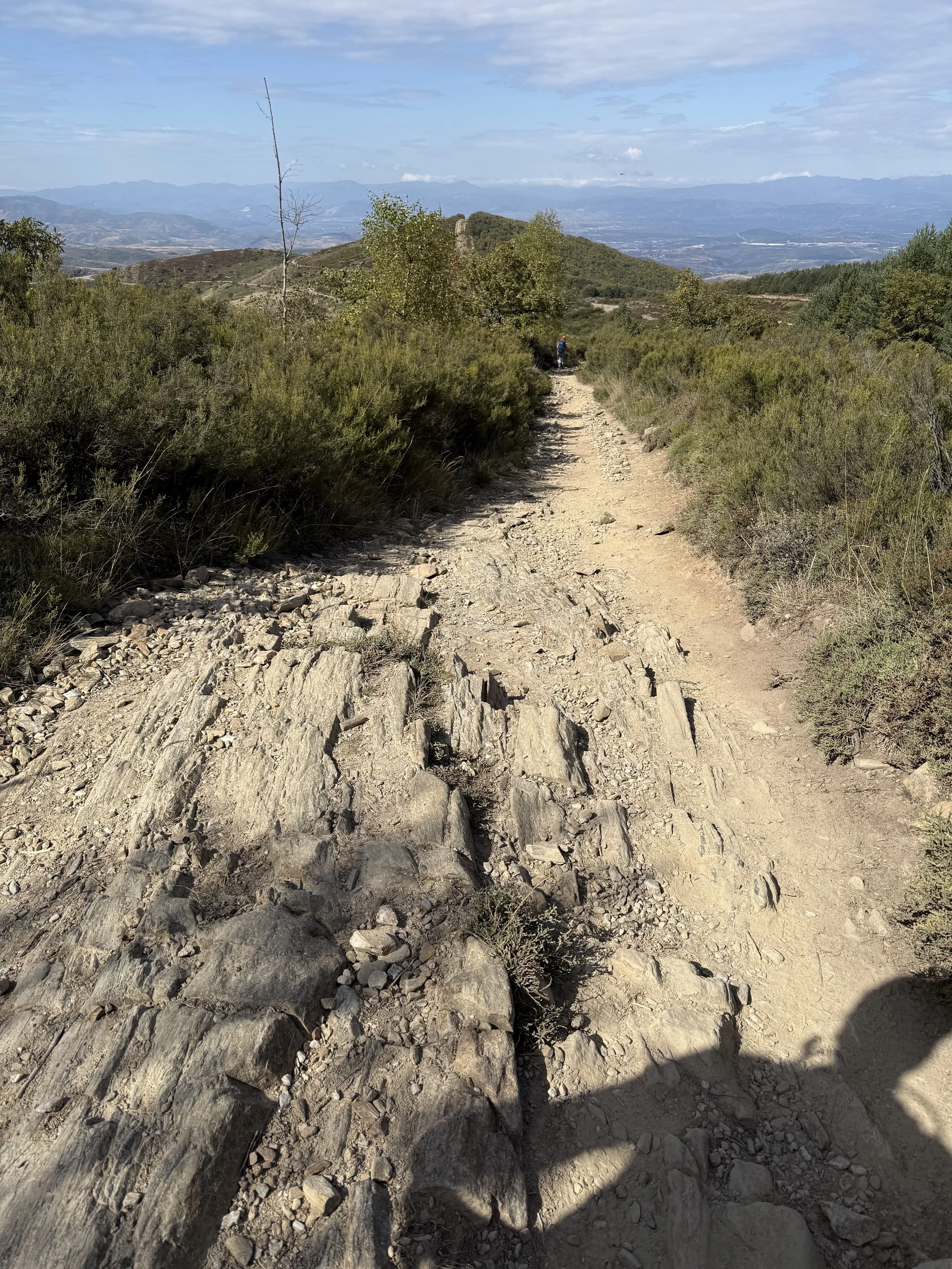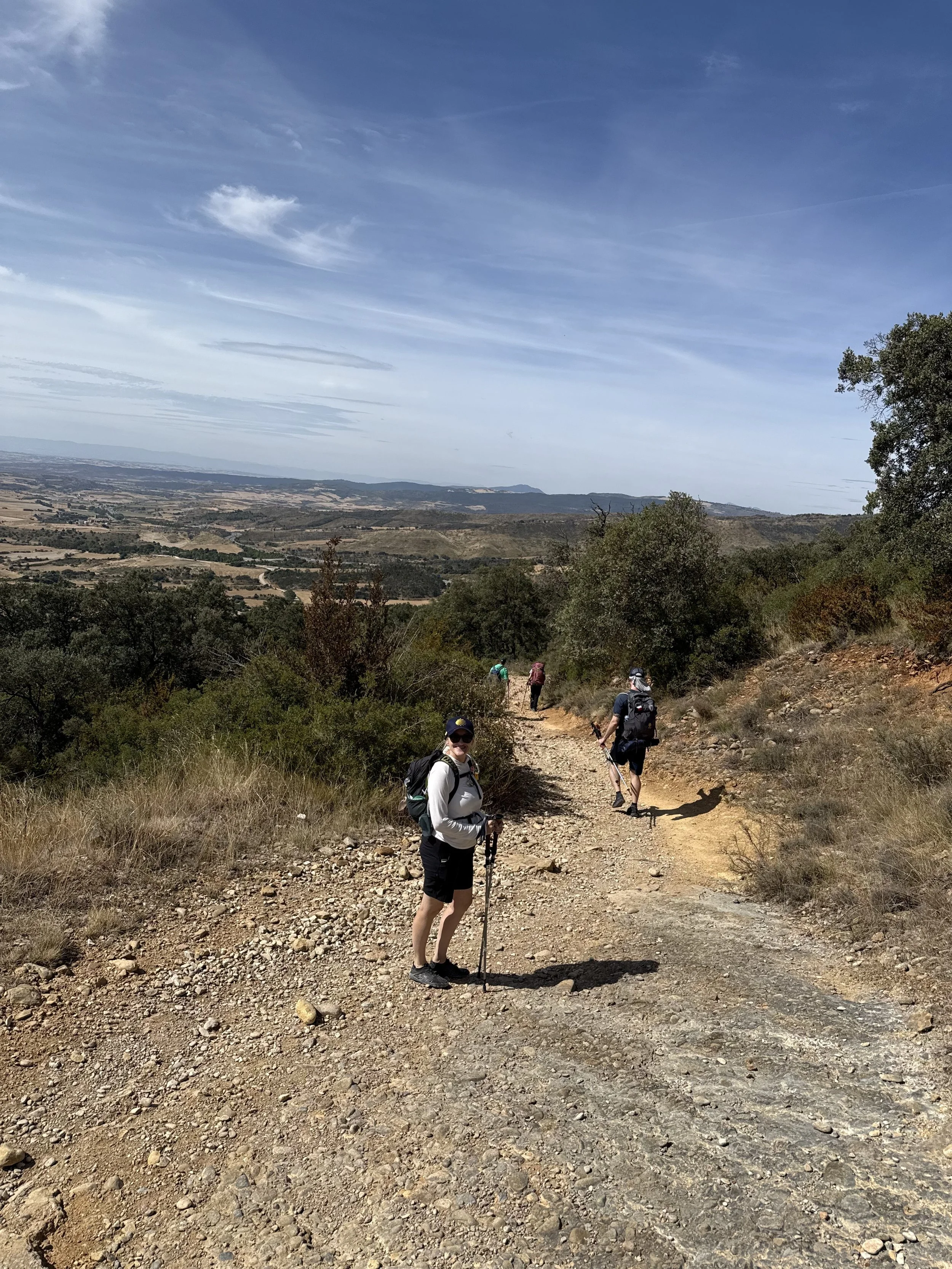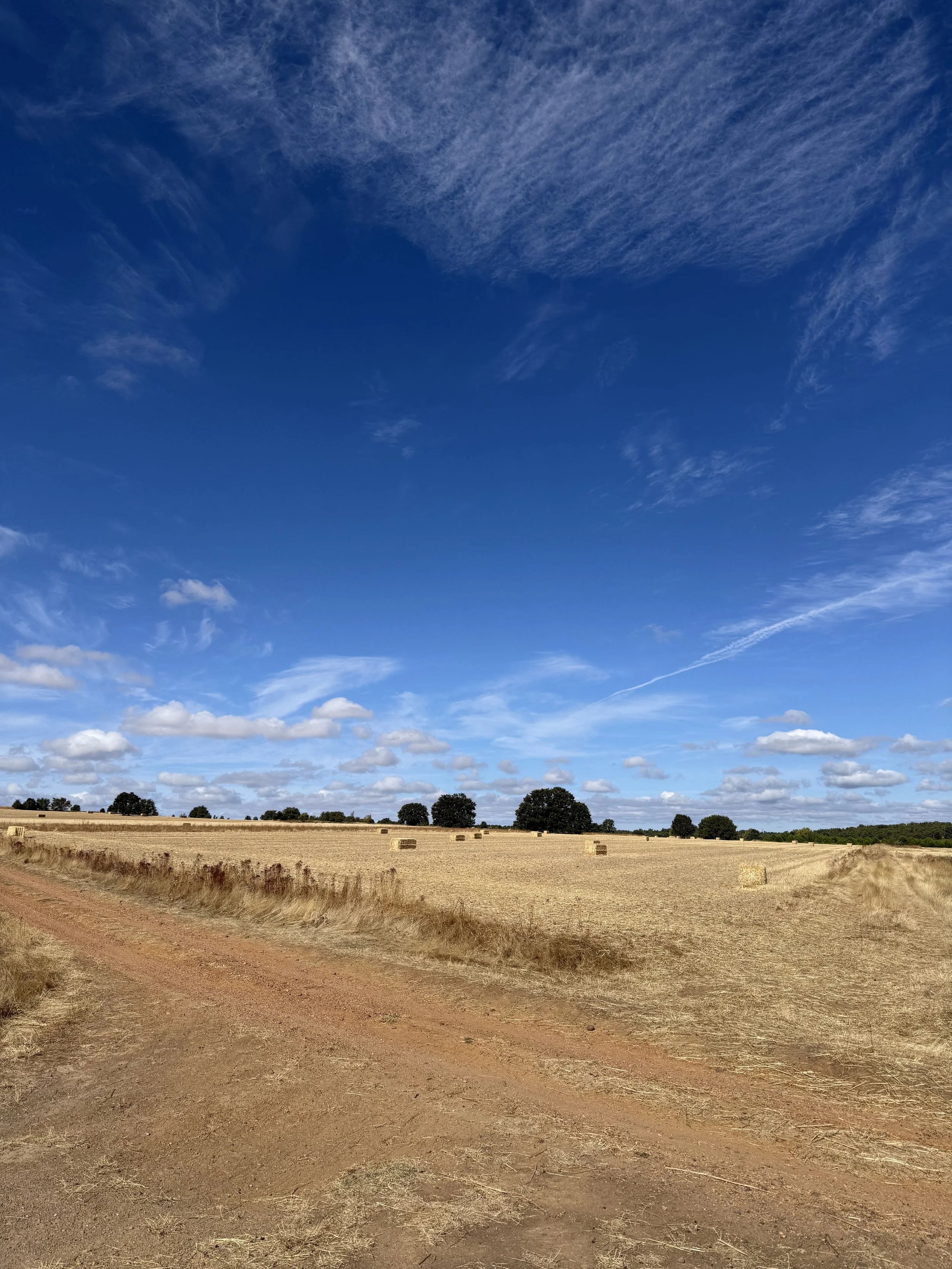Training for the Camino de Santiago: A 12-Week Walking Plan
Preparing for Your Pilgrimage
When I first decided to walk the Camino de Santiago, I was overjoyed — and a little intimidated.
The idea of walking 10–15 miles every day for weeks was unlike anything I’d ever done before.
The truth is, while the Camino is accessible to almost anyone, proper training makes all the difference.
Training isn’t just about avoiding blisters or sore muscles; it’s about giving yourself the confidence to fully enjoy every step of your journey.
I’ve learned what works (and what doesn’t) when preparing for this incredible pilgrimage.
In this post, I’ll share a practical 12-week Camino training plan that blends walking, strength, and stretching — even if you’re starting as a beginner.
Related Post: Best Places to Stay on the Camino de Santiago: Albergues, Hotels, and More
Why Training for the Camino Matters
The Camino is not a sprint — it’s a marathon of consistent daily effort.
Even if you’re active, walking day after day with a backpack requires preparation.
Benefits of Training:
Builds endurance so you can walk long distances comfortably.
Strengthens muscles and joints to prevent injury.
Conditions your feet to reduce blisters and pain.
Helps you test and adjust your gear before the trip.
Boosts confidence so you can focus on the spiritual and cultural aspects of the Camino.
Personal Note:I trained for the Camino by walking regularly for months. By the time I reached Spain, I was able to truly enjoy the experience rather than just survive it.
Key Elements of Camino Training
Before we dive into the week-by-week plan, let’s cover the foundational elements of training.
1. Walking
The heart of your training!
Focus on gradually increasing distance and time on your feet.
Include a mix of terrains (paved roads, gravel paths, hills) to mimic the Camino.
2. Backpack Training
Begin walking with your fully loaded pack 4–6 weeks before departure (or a weighted vest).
Start light and add weight gradually until you’re carrying your actual Camino weight (usually 10–15 lbs or 4–7 kg).
3. Strength Training
Strengthen key muscle groups to support your walking:
Legs (quads, hamstrings, calves)
Core (abs and lower back)
Glutes and hips
Include exercises like squats, lunges, step-ups, and planks 2–3 times per week.
4. Stretching and Mobility
Stretch after every walk to keep muscles flexible.
Focus on calves, hamstrings, hips, and lower back.
Consider yoga or gentle mobility exercises once or twice a week.
5. Rest and Recovery
Take at least one rest day per week to prevent burnout and allow your body to adapt.
Me walking the Camino.
12-Week Camino Training Plan
This plan assumes you are starting with a moderate fitness level.
If you’re completely new to exercise, add an extra week or two of base walking before Week 1.
Note: Distances are in miles, but you can easily convert to kilometers by multiplying by 1.6.
Weeks 1–4: Build Your Base
Goal: Establish consistency and build endurance.
Monday
Rest or gentle stretching
Tuesday
2–3 miles easy walk
Wednesday
Strength training (30 mins)
Thursday
3 miles brisk walk
Friday
Rest or yoga
Saturday
Long walk: 4–6 miles
Sunday
2–3 miles recovery walk
Weekly Mileage Goal: 10–15 miles
Focus This Month:
Get used to regular walking.
Wear the shoes you plan to take on the Camino. Women’s Shoes. Men’s Shoes
Begin breaking in socks and testing different blister prevention methods. This is essential.
Get Your Gifts and Gear Here
Weeks 5–8: Increase Distance and Intensity
Goal: Build stamina and start simulating Camino conditions.
Monday
Rest
Tuesday
3–4 miles brisk walk
Wednesday
Strength training (30–45 mins)
Thursday
4–5 miles brisk walk
Friday
Rest or gentle yoga
Saturday
Long walk: 7–10 miles
Sunday
3–4 miles recovery walk
Weekly Mileage Goal: 18–25 miles
Focus This Month:
Add hills to mimic Camino terrain.
Start carrying your backpack with a few pounds of weight.
Pay attention to hydration and nutrition during walks.
Download my free printable foot care checklist.
Rugged terrain on the Camino de Santiago.
Weeks 9–12: Peak Training
Goal: Prepare your body for back-to-back long walking days.
Monday
Rest
Tuesday
4–5 miles brisk walk with pack
Wednesday
Strength training (30–45 mins)
Thursday
5–6 miles brisk walk with pack
Friday
Rest or yoga
Saturday
Long walk: 10–14 miles with pack
Sunday
6–8 miles recovery walk
Weekly Mileage Goal: 25–35 miles
Focus This Month:
Walk with your fully loaded pack on most walks.
Do at least two back-to-back long walks to simulate consecutive Camino days.
Fine-tune gear and footwear — no surprises on the trail!
FOLLOW THE CAMINO CHRONICLES
FACEBOOK: THE CAMINO CHRONICLES
Extra Tips for Training Success
1. Blister Prevention
Wear moisture-wicking socks (like merino wool).
Keep feet dry and well-lubricated.
Test blister pads like Compeed during training.
Related Post: How to Get from Santiago to Finisterre and Muxía – Complete Travel Guide
2. Practice Walking in All Weather
The Camino will bring sun, rain, and wind — sometimes all in the same day!
Train in a variety of conditions so you’re ready for anything.
3. Fuel and Hydrate Like It’s the Camino
Drink water regularly during walks.
Carry a small snack like nuts or energy bars for long walks.
Use training days to practice eating the way you will on the trail.
Great gear is essential.
4. Test All Your Gear
Shop for your gear in The Camino Shop
Use your training to break in:
Shoes
Backpack
Trekking poles
Clothing layers
Hydration system
Personal Tip:I changed my shoes just two weeks before leaving — big mistake!
Make all gear decisions at least a month before departure.
Sample Packing Weight Guide
Your pack weight should be about 10% of your body weight, not including water or food.
Body Weight. Max Pack Weight
120 lbs / 55 kg. 12 lbs / 5.5 kg
150 lbs / 68 kg 5 lbs / 7 kg
180 lbs / 82 kg 18 lbs / 8 kg
Related Post: Best Places to Stay on the Camino de Santiago: Albergues, Hotels, and More
The Meseta, The French Way
Why 12 Weeks Works
Three months gives your body time to adapt gradually, reducing the risk of injury.
By the end of this plan, you’ll be able to:
Walk comfortably for 10–14 miles in one day
Repeat long walks for multiple days in a row
Carry your pack with confidence
Start your Camino with strong legs and a stronger mindset
Final Thoughts: Train Well, Walk Joyfully
The Camino de Santiago is about so much more than just walking — it’s a journey of the heart, mind, and spirit.
But when your body is well-prepared, you can focus on the beauty of the experience rather than the discomfort of sore feet and fatigue.
As you train, remember: this isn’t just preparation for a trip.
It’s the beginning of your pilgrimage — one step at a time.
“Every step you take before the Camino is part of your Camino.”
Call-to-Action
Download my free Camino Packing Checklist to make sure you have everything you need.
Read Exploring Santiago de Compostela: What to Do After You Finish Your Camino.
Follow Camino.Chronicles on Instagram for weekly training inspiration and tips.
Buen Camino, friends!
Renae



